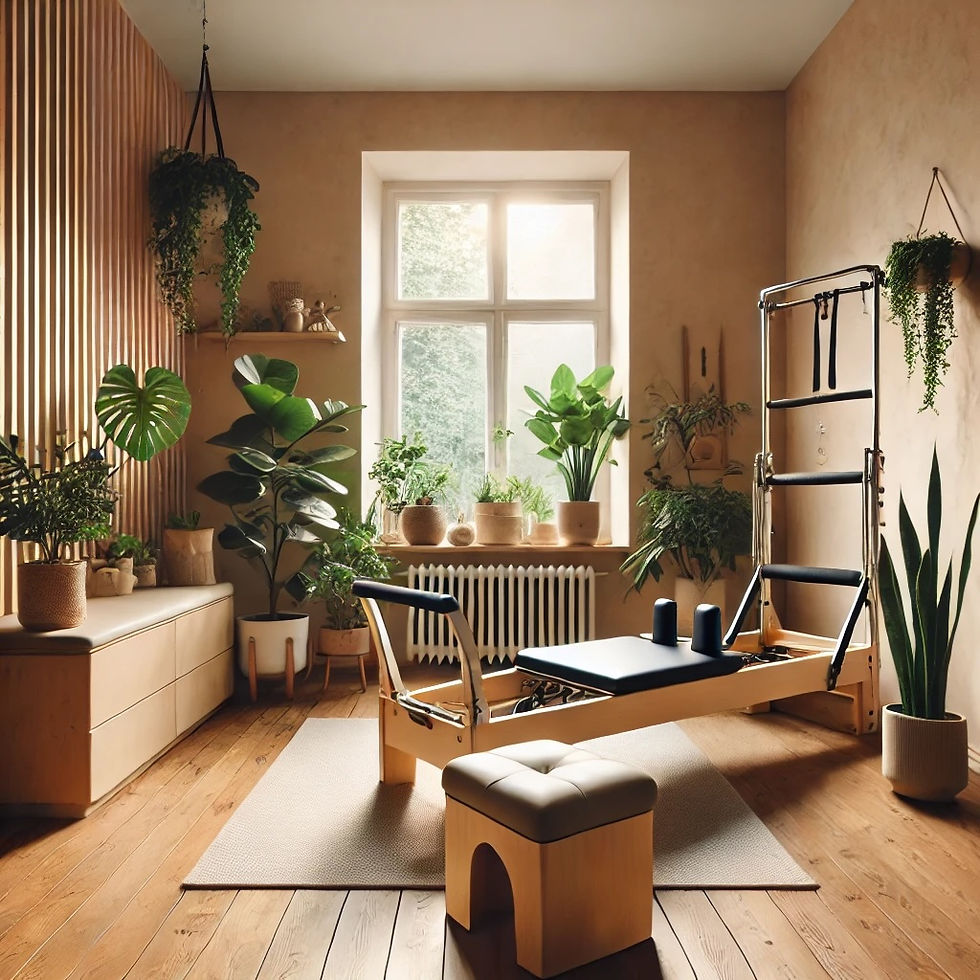Pilates Wellness Wednesday: Embracing Bio-Living in Your Daily Life
- Michael King

- Nov 20, 2024
- 3 min read

In today’s fast-paced world, where technology dominates our lives and convenience often trumps mindfulness, the concept of bio-living offers a refreshing approach to wellness. At its core, bio-living is about reconnecting with nature and aligning our surroundings and habits with the natural rhythms of life. For Pilates teachers, who already champion mindful movement and a holistic approach to health, bio-living is a natural complement to the Pilates philosophy.
What is Bio-Living?
Bio-living is a lifestyle concept centred around integrating nature into your daily life and living in harmony with the environment. It’s not just about sustainability or going green, although these are integral parts. Bio-living encourages us to design our surroundings, routines, and habits in ways that nurture both our physical and mental well-being while reducing our impact on the planet.
Think of it as creating a living environment that breathes life into you, both literally and figuratively. From the air quality in your home to the materials you surround yourself with, bio-living is about fostering a space that supports health, mindfulness, and vitality.
How Can Pilates Teachers Incorporate Bio-Living?
As Pilates teachers, our work is deeply rooted in helping clients connect to their bodies and create balance in their lives. Incorporating bio-living can enhance this mission by extending the concept of mindfulness beyond the mat. Here are some ideas to get started:
1. Bring Nature Into Your Space
Whether you teach in a studio or at home, adding natural elements can transform the environment. Incorporate plants to purify the air and create a sense of calm. Choose natural materials for your equipment and décor, think bamboo mats, wooden furniture, or organic cotton cushions.
2. Optimise Air and Light Quality
Good air quality is essential for effective breathing and overall health. Invest in air-purifying plants or open windows whenever possible. Light is equally important, so maximise natural light during the day and use soft, warm lighting in the evenings to promote relaxation.
3. Encourage Grounding Practices
Bio-living emphasises connecting physically with the earth. Encourage your clients to take part in grounding activities like barefoot walking on grass or sand. You can even incorporate grounding into your sessions by practising standing Pilates movements outside on a natural surface.
4. Focus on Seasonal Living
Aligning your habits with the seasons is a powerful way to embrace bio-living. In your classes, tailor movement themes to the time of year, for example, energising flows in spring and more restorative routines in winter. Encourage clients to eat seasonal, locally grown produce to support their overall well-being.
5. Create Tech-Free Zones
Modern life is filled with screens and devices that pull us away from mindfulness. Dedicate parts of your teaching space to be tech-free zones, encouraging clients to fully immerse themselves in their Pilates practice without distractions.
6. Incorporate Mindful Movement Outdoors
Take your sessions outside whenever possible. Practising Pilates in a park, garden, or near a beach allows clients to benefit from fresh air, natural light, and the grounding presence of nature.
Starting Your Bio-Living Journey
For Pilates teachers and clients alike, the key to bio-living is to start small. You don’t need to overhaul your entire lifestyle overnight. Instead, focus on one or two changes at a time, such as adding plants to your studio or incorporating grounding exercises into your classes.
Bio-living is a journey that aligns perfectly with the Pilates principle of mindful living. By embracing it, you not only enhance your own well-being but also create a ripple effect, inspiring your clients to live healthier, more connected lives.
As Joseph Pilates himself said, “Physical fitness is the first requisite of happiness.” Through bio-living, we can extend this happiness beyond the body and into the spaces where we live, breathe, and teach.
So, this Wellness Wednesday, why not explore how you can bring more nature into your life, and your teaching? Let bio-living inspire you to create a world that supports not only movement but a truly balanced life.




Comments